Celebrating 175 years of history at the University at Albany
Dear UAlbany Family:
In 1844, a group of optimistic believers—students, faculty, and supporters—answered an extraordinary call: to instill knowledge in others in order to make a better world.
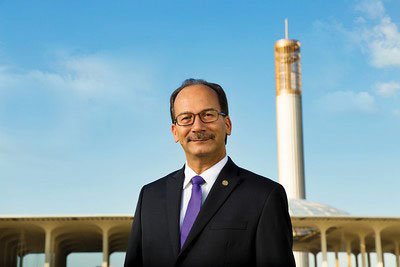
University at Albany, State University of New York
Today, that legacy endures. As we celebrate the University at Albany’s 175th anniversary, we remain committed to inspire the aspiring; to create a climate where diverse voices thrive; and to support great minds to turn possibilities into promise through teaching, research, and service.
In reaching this historic milestone, we are also inspired to realize our vision, which is to be the nation’s leading diverse public research university—providing leaders, knowledge, and innovations to create a better world.
Our institution has been known by several names: New York State Normal School, the New York State College for Teachers, Albany State, and the University at Albany.
But through it all, for 175 years, there has been one constant: a commitment to excellence. It is that excellence—and our proud history—that we will be celebrating throughout this year.
I look forward to marking this historic milestone together with you, and to celebrating our past achievements while we continue to build an even greater future for UAlbany.
Go Great Danes!
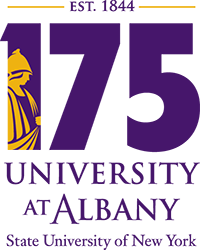
'Neath the Purple and the Gold, let thy history unfold...
1844
New York State Normal School: 1844 to 1890
May 7, 1844
The State Legislature creates the New York State Normal School, the first state-administered institution of higher learning in New York.
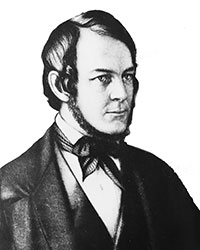
December 13, 1844
David Perkins Page is named the chief officer, as principal, of the New York State Normal School. In 1847, he published Theory and Practice of Teaching, which became the most widely-used textbook in all of American teacher education.
1845
The Teaching School opens. Later named the Milne School, it is reputed to be one of the first practice-teaching schools in the country.
January 1, 1848
Upon the death of David Perkins Page, George R. Perkins, the Normal School’s first faculty member in 1844, becomes the second principal.
September 26, 1849
The Association of Graduates, predecessor to the Alumni Association, is established.
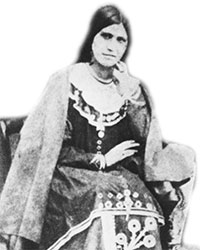
May 1850
Nine Native-American pupils are admitted. The first Native American to graduate is Harriet Twoguns, on July 13, 1865.
September 20, 1852
Samuel B. Woolworth becomes the third principal of the Normal School.
February 25, 1856
David Cochran becomes the fourth principal of the Normal School.
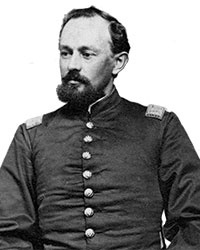
September 25, 1862
The Normal School Company E, comprised of approximately 100 faculty and students, is formed to fight in the Civil War. Led by Professor of Mathematics Capt. Albert N. Husted ’45 and Capt. Rodney Kimball, the company engages in 17 battles, including Gettysburg.
December 1864
Oliver Arey becomes the fifth and final principal of the Normal School.
February 1, 1866
Kate Stoneman graduates. She will become the first woman lawyer in New York State.
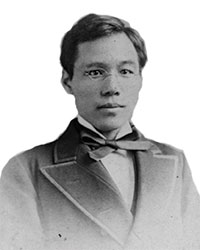
June 28, 1877
Sensaburo Kudzo of Japan, the School’s first international student, graduates.
January 25, 1884
Evelena Williams becomes the first known African-American graduate of the School.
January 23, 1885
President-Elect Grover Cleveland presents degrees at commencement.
September 9, 1885
The College moves into a new building on Willett Street, opposite Albany’s Washington Park, and opens for classes.
1890
New York State Normal College: 1890 to 1914
1890
The institution becomes the New York State Normal College, with a mission of preparing secondary-school teachers.
October 1890
Delta Omega Sorority, the institution’s first recorded Greek society, is founded.
June 1892
The Normal College Echo, the first student newspaper/literary magazine/alumni publication, begins as a monthly.
January 31, 1893
Ruth Dakin Sherrill receives the School’s first bachelor’s degree, a bachelor’s in pedagogy.
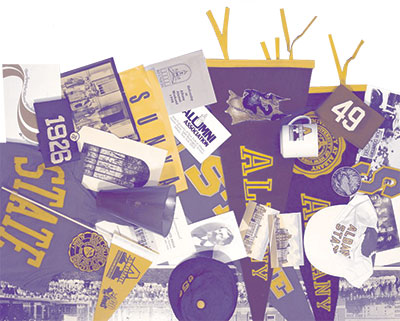
1896
The first mention of purple and gold as school colors appears in an article for the college’s pin.
June 16, 1896
The first master’s degree – in pedagogy – is awarded to Harriet Wright Burton.
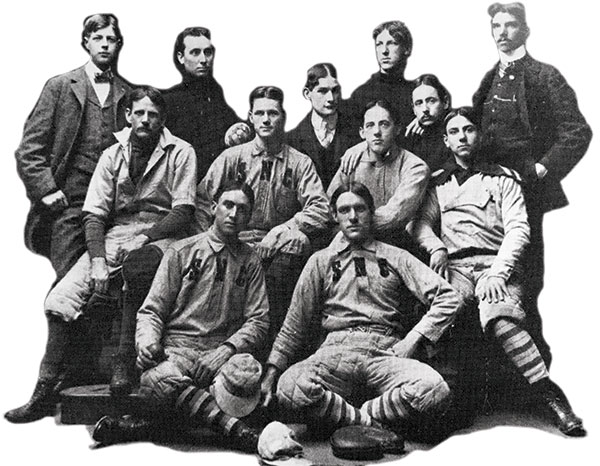
May 17, 1897
The inaugural college baseball team plays its first game at Castleton, losing by the score of 5 to 2.
1905
The institution becomes a four-year liberal-arts college for secondary-school teacher training, with the authority to confer the B.A., B.S., and the forerunner of an M.A. in education degrees.
January 8, 1906
The Willett Street Building burns in a fire, forcing the school to move to temporary space for the next three years. A janitor rescues the statue of Minerva — the University’s symbol — from the burning building.
October 28, 1909
The first three buildings of the downtown campus are dedicated. In 1929, they will be named Husted, Draper, and Hawley halls.
June 21, 1910
Javier Adriansen of Chiclayo, Peru, becomes the School’s first Latin-American graduate.
1914
New York State College for Teachers: 1914 to 1959
April 30, 1914
The School becomes the New York State College for Teachers, the formal recognition that the school is a liberal-arts college for teachers.
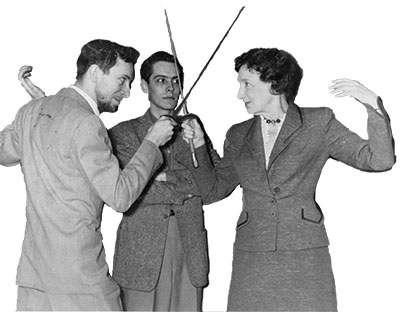
1919
Professor Agnes E. Futterer, Class of 1916, helps organize the Dramatics and Art Association. Under her 41-year guidance, the dramatics program produced several actors, directors, and technicians who graced both Broadway and Hollywood.
Fall 1919
The freshman beanie is introduced. Each class is assigned a color and a mascot, either the Red Devils, Yellow Jackets, Green Gremlins, or Blue Jays. Freshmen are “encouraged” to wear their beanies for certain days and events.
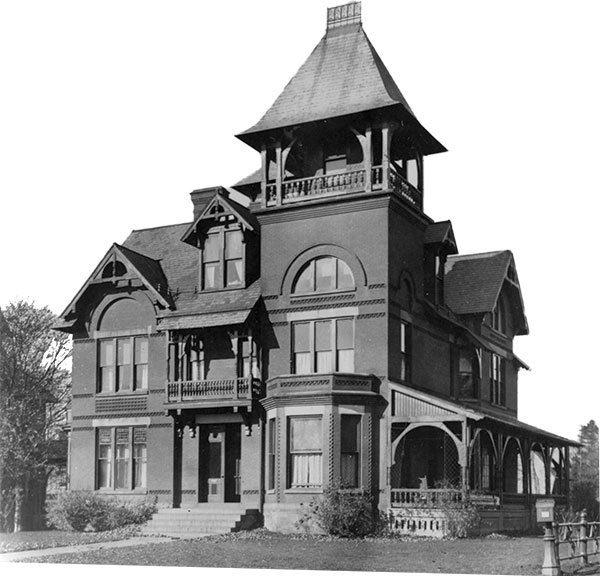
Circa 1925
Before the first dormitories opened in 1935, students often lived in sorority or fraternity houses or boarded with local families. Syddum Hall, a private boardinghouse for students on Engelwood Place, was the first dormitory for women.
1929
Milne Hall, Page Hall, and Richardson Hall open, doubling the size of the campus.
June 9, 1930
The institution receives its first known research grant: a five-year award from the Spellman Foundation to study child development, pre-school learning, and parental education.
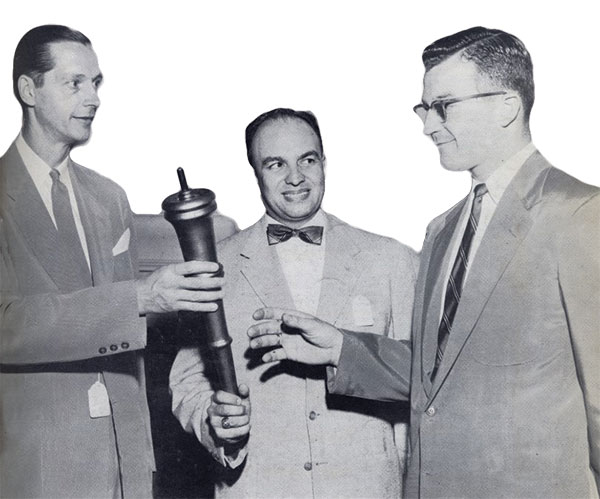
June 14, 1930
The Alumni Association introduces the first Torch Light Ceremony and Procession to initiate graduating seniors into its ranks.
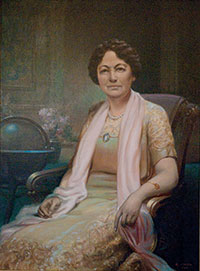
September 1935
The College’s first on-campus dormitory, a women’s residence hall, opens. In 1941, it is named Pierce Hall in honor of Anna E. Pierce, former student (Class of 1884), teacher, dean of women, and a prime mover in the fundraising campaign for the building.
1935-38
Murals funded by the federal Works Progress Administration (WPA) are painted in Hawley Hall.
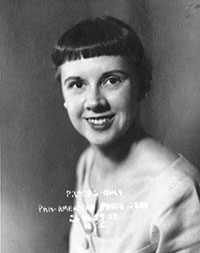
June 17, 1940
Marcia Brown graduates. She will become the first three-time winner of the Caldecott Medal, the American Library Association’s highest award for illustrators of children’s picture books.
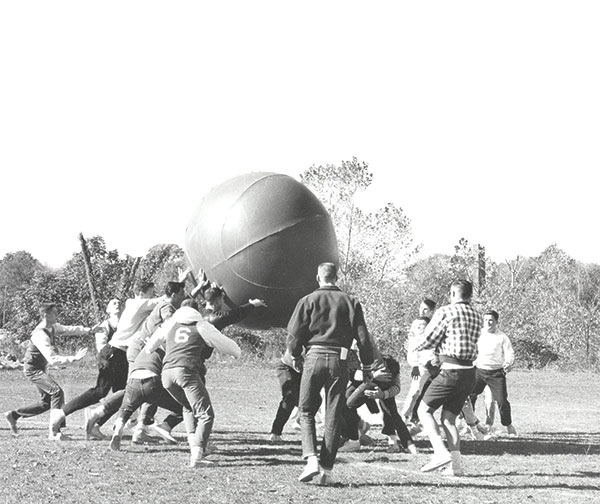
Circa 1944
The small student body develops a number of campus traditions. “Rivalry,” held between the 1910s and 1960s, was a yearly competition between freshmen and sophomores.
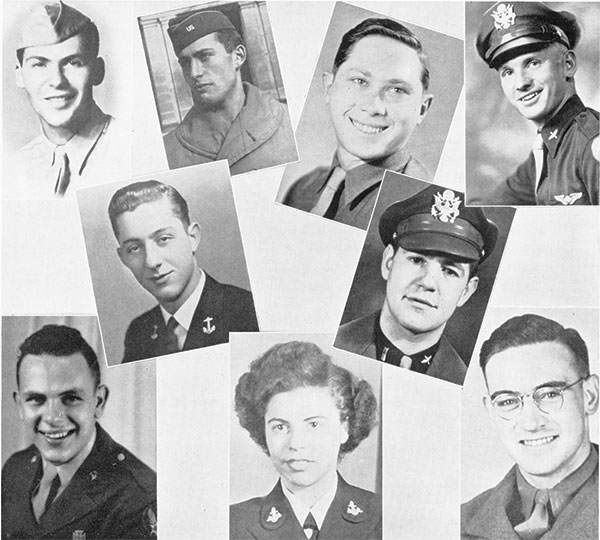
1942-45
More than 500 students and alumni serve in the Second World War and support the war effort. At least 19 lose their lives in the conflict.
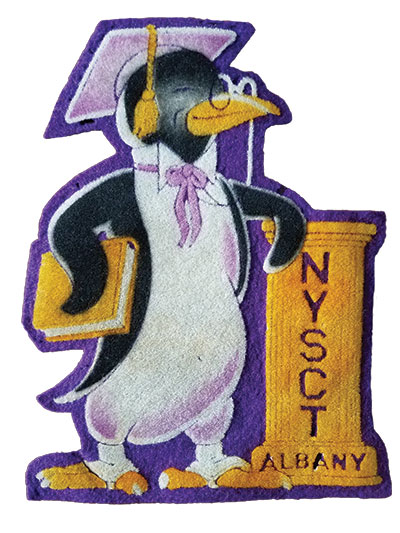
May 13, 1949
Pedguin, a penguin-like figure, is selected as school mascot in a contest. Paul Kirsch, Class of 1951, who submitted the winning selection, later states he initially called the mascot a pedwin.
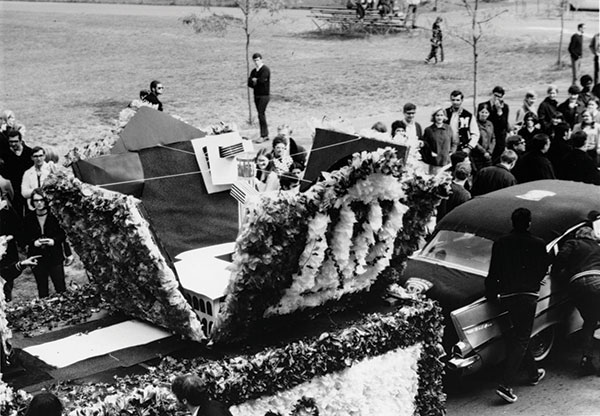
October 31, 1953
The first Homecoming is held.
April 8, 1961
Gov. Nelson A. Rockefeller approves the State University of New York’s revised master plan, calling for the establishment of comprehensive state university centers in Stony Brook, Binghamton, Buffalo, and Albany.
1962
State University of New York at Albany: 1962 to 1986
August 1962
New York Gov. Nelson A. Rockefeller leads the groundbreaking for the uptown campus. The institution is renamed the State University of New York at Albany and becomes a University Center within SUNY.
1962-63
The College of Arts and Sciences and professional schools of Education, Business, and Library Science are created.
January 1963
The SUNY Board of Trustees votes to impose tuition on all students for the first time, beginning in Fall 1963. Tuition is $200 per semester for New York resident undergraduates and $300 for non-residents.
June 16, 1963
The first doctoral degree, an Ed.D., is awarded to James Arthur Conway of the School of Education.

May 14, 1965
In a contest, the Great Dane is chosen as the University’s new mascot. The winning entry is submitted by Kathy Earle, Class of 1967.
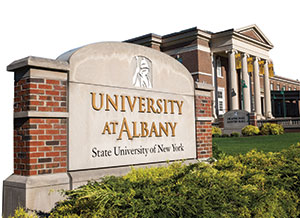
1965-68
The School of Social Welfare, the Graduate School of Public Affairs (now Rockefeller College of Public Affairs and Policy), and the School of Criminal Justice are created in 1965, 1966, and 1968, respectively.
Fall 1966
The first classes are held on the Academic Podium of the uptown campus.
October 5, 1967
The University Art Gallery (now Art Museum) is dedicated by Gov. Nelson A. Rockefeller.
1968
The Educational Opportunities Program (EOP) is established.
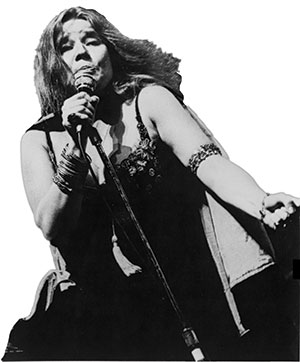
February 14, 1969
Janis Joplin performs on campus.
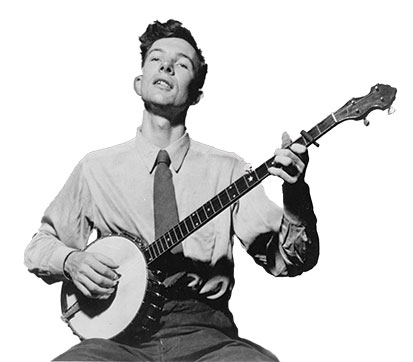
March 12, 1969
Pete Seeger entertains an enthusiastic crowd in the University Gymnasium.
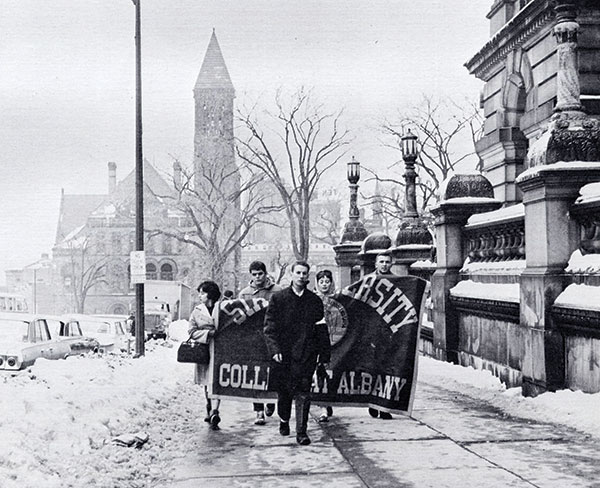
1961-72
An era of protest and activism at the University ensues. It includes boycotts of dining halls, protests over tuition hikes and budget cuts to higher education, support for civil and women’s rights and environmentalism, and protests over the Vietnam War and Dow Chemical recruitment on campus.
1974
William N. Fenton of Anthropology, renowned for his studies on Iroquois history and culture, becomes UAlbany’s first State University of New York Distinguished Professor.
Spring 1974
A Phi Beta Kappa chapter is officially installed.

May 7, 1983
U2 plays a concert at the University as part of Celebration 83 (formerly and then again called Mayfest).
August 6, 1984
Legislation officially creates the New York State Writers Institute.
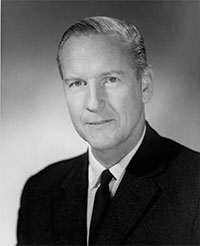
September 1984
The Collins Fellow, a unique faculty designation among the nation’s universities, is established. Named for former President Evan Collins, it honors faculty who exhibit extraordinary devotion to the University over a sustained period of time. The first recipients are Frank Carrino of Hispanic & Italian Studies and Helen Horowitz of Economics.
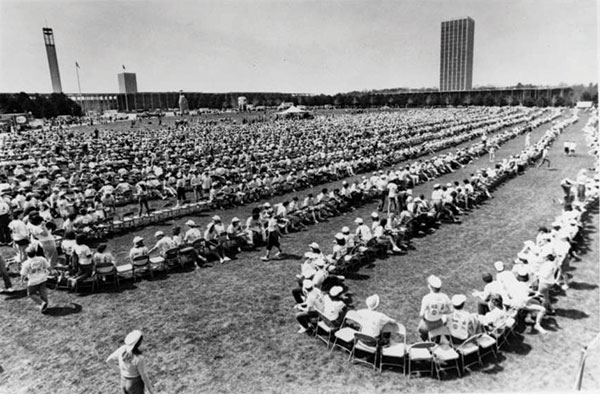
April 1985
Thousands of students participate in the world’s largest game of musical chairs, putting the game and the University in the Guinness Book of World Records for a time.
1985
The School of Public Health opens as a partnership between the University and the New York State Department of Health.
1986
University at Albany, SUNY: 1986 to Present
Fall 1988
Freedom Quadrangle becomes the first new residential hall to open at the University since Fall 1970. It is also the first residence hall to have apartment-style accommodations.
December 1992
The University’s first athletic fieldhouse, the Recreation and Convocation Center, opens.
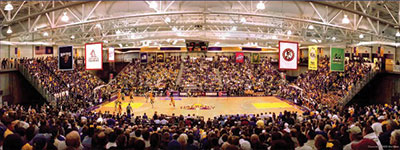
1993
The University is named a Center for Advanced Thin Film Technology by New York for its work in the emerging field of nanotechnology. UAlbany becomes a worldwide leader in this science, establishing a school and then the College of Nanoscale Science and Engineering. The college becomes a separate SUNY institution in 2013.
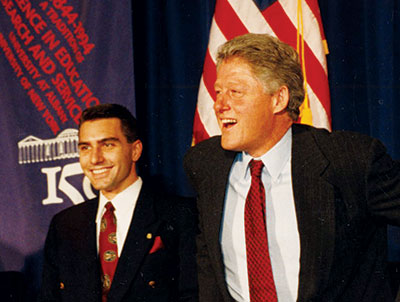
November 3, 1994
President William J. Clinton becomes the first sitting U.S. president to visit the campus.
May 15, 1994
Sixteen students from the Class of 1994 are selected as the honorary 100,000th graduate of the institution.
June 30, 1997
The new Center for Environmental Sciences and Technology Management (CESTM) is dedicated. It houses the Atmospheric Sciences Research Center, the Center for Advanced Thin Film Technologies, incubator businesses, and the Albany office of the National Weather Service.
March 1998
The Science Library, the first new academic space on the UAlbany campus in 35 years, opens, initiating a 20-year period of physical growth.
September 1999
The University begins its first year of competition at the NCAA Division I level.
2000
For the first time, the University is designated a Research 1 University by the Carnegie Classification of Institutions of Higher Education.
August 24, 2000
The Boor Sculpture Studio has its official groundbreaking.
October 13, 2004
The 194,000-sq.-ft. Life Sciences Research Building opens. It will foster research and development in the biosciences and eventually house The RNA Institute.
August 2013
The new School of Business building opens. Two years later it is named the Massry Center of Business in recognition of a $5.25 million gift from the Massry family to support the School of Business and key University-wide initiatives.
September 14, 2013
A new 8,500-seat football stadium opens. The facility will later become known as Bob Ford Field at Tom & Mary Casey Stadium.
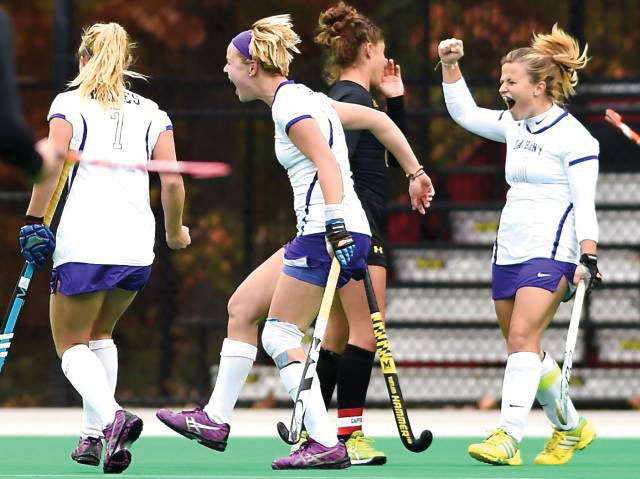
November 16, 2014
Women’s field hockey advances to the NCAA Tournament semifinals, the first trip to a Division I Final Four in school history.
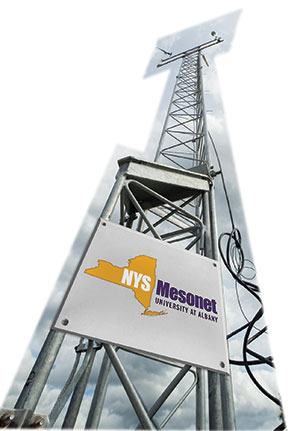
Summer 2015
The University completes the first installation of New York State Mesonet, a network of what will become 126 weather stations across the state providing the most advanced early warning weather detection system in the country.
September 29, 2015
The University and Albany Law School announce a deeper affiliation that creates new academic opportunities for students.
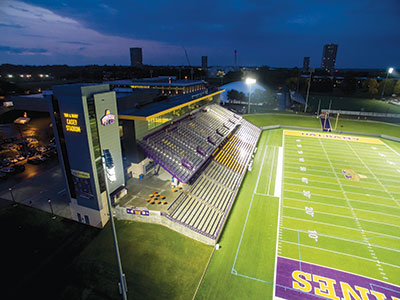
October 8, 2015
UAlbany receives a $10-million gift to its athletics program from the Bernard and Millie Duker Children’s Foundation, established by William Duker ’75, Sharon Casey Duker, and William Duker. In recognition, the football stadium is named Tom & Mary Casey Stadium in honor of Sharon Duker’s parents.
2015
The new College of Emergency Preparedness, Homeland Security and Cybersecurity and the College of Engineering and Applied Sciences are inaugurated.
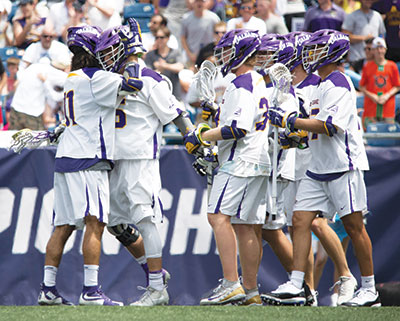
February 26, 2018
Men’s lacrosse is ranked as the No.-1 team in the nation — a first for any UAlbany Division I team and any Division I program in the State of New York system. In May, the Great Danes advance to the NCAA Final Four.
April 19, 2018
Groundbreaking occurs for the Emerging Technology and Entrepreneurship Complex (ETEC), an interdisciplinary academic and research center focusing on weather, climate, emergencies and disasters, and entrepreneurial opportunities.
2019

May 7, 2019
The 175th anniversary of the institution is officially noted.
May 17-19, 2019
The University’s 175th Commencement takes place.
